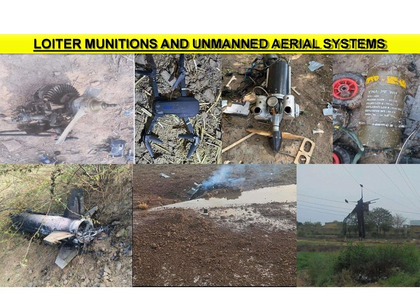Chinese missile maker's stock tanks over 6 pc after India destroys its air weapon
By IANS | Updated: May 13, 2025 13:37 IST2025-05-13T13:31:43+5:302025-05-13T13:37:43+5:30
New Delhi, May 13 The shares of Zhuzhou Hongda Electronics Corp Ltd, the Chinese defence company that manufactures ...

Chinese missile maker's stock tanks over 6 pc after India destroys its air weapon
New Delhi, May 13 The shares of Zhuzhou Hongda Electronics Corp Ltd, the Chinese defence company that manufactures the PL-15 missile, dropped sharply by 6.42 per cent or 2.56 Yuan to 37.33 Yuan on Tuesday, after India's air defence system successfully intercepted and destroyed the missile during the conflict with Pakistan.
Over the past month, the company’s shares have declined by 7.37 per cent, or 2.97 Yuan. However, the stock showed a brief 5-day recovery of 7.58 per cent.
The stock plunge came after Indian defence forces confirmed that the PL-15 missile, supplied to Pakistan by China, failed to penetrate the country's multi-layered air defence system.
On the night of May 9 and 10, Pakistan launched a series of air attacks targeting Indian Air Force bases and military facilities using advanced weaponry, including the Chinese PL-15 missile and Turkish-made
However, India’s air defence successfully intercepted all threats.
The PL-15, a beyond-visual-range (BVR) air-to-air missile used by Pakistan’s JF-17 and J-10 fighter jets, was neutralised by indigenous defence systems.
This interception has raised questions about the real-world effectiveness of China’s missile technology, possibly triggering the decline in investor confidence in Zhuzhou Hongda.
India’s Director General of Air Operations, Air Marshal A.K. Bharti, displayed images of the intercepted weapons, showcasing how the Indian defence network had destroyed high-tech missiles and drones.
He credited India’s self-reliant defence capabilities, particularly the indigenous 'Akash' air defense system, as a crucial factor in neutralising the threat.
The Akash system, alongside vintage systems like Pichora and advanced platforms including MANPADS, short-range missiles, and fighter aircraft, formed a coordinated defense shield under the Integrated Air Command and Control System.
The Turkish Byker YIHA III drone, capable of carrying high-explosive payloads and designed for low-altitude, high-speed attacks, was also intercepted near Amritsar.
This drone was intended to cause significant damage to military or civilian targets, but failed to breach India’s defenses.
Lieutenant General Rajiv Ghai, Director General of Military Operations (DGMO), explained the multi-layered coordination among the Indian Army, Air Force, and Navy, describing a defence posture that was both measured and impenetrable.
Between May 9 and 10, India’s multi-layered air defence grid was put to the test as waves of drones, launched by the Pakistan Air Force (PAF), attempted to penetrate Indian airspace. “Not a single PAF drone could breach the defence shield,” Lt Gen Ghai stated.
Disclaimer: This post has been auto-published from an agency feed without any modifications to the text and has not been reviewed by an editor
Open in app